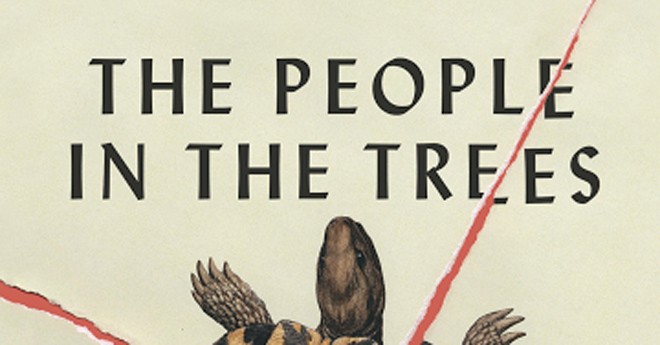
An engaging story of civilisational hubris contributing to human successes and failures

Dr D. Carleton Gajdusek was a maverick virologist and a medical anthropologist whose work on the etiology of kuru disease in cannibalistic tribes of New Guinea. His work on kuru disease led to the discovery of prion -- the nonliving protein that can reproduce itself and is responsible for Mad Cow disease. His total research output was over 600 research papers and 18 volumes of anthropological journals comprising more than 5000 pages. In 1976, he was awarded the Nobel Prize in Medicine for his contribution to the field. He was a formidable scholar and his discoveries led to some major breakthroughs in epidemiology.
But he was a deeply flawed genius. During his interactions with the remote tribes living on Pacific islands, he observed rites of passages in which young boys were initiated into adulthood by adult males through rituals which contemporary Western legal paradigms describe as pederasty or paedophilia. He adopted 57 children from different tribes and brought them to his home in Maryland, USA, and paid for their school and college studies and raised them as fully functional members of the society. But the rumours of his paedophilia eventually caught up with him when one adopted child reported him to the police.
In 1997, he pleaded guilty of child abuse and spent one year in prison under a plea agreement. The original sentence was expected to be 30 years but, because the police did not have sufficient evidence, the confession and the plea bargain reduced the sentence to one year in a correctional facility.
This is the true story that has inspired the novel The People in the Trees by Hanya Yanagihara. Yanagihara, as a professional linked with tourism, had the opportunity to visit many remote islands and has spent eighteen years writing this novel. In the novel, Carleton Gajdusek becomes Dr Abraham Norton Perina and the story is told through his correspondence from his prison cell with Dr Ronald Kubodera, one of his lab/research associates and an admirer of his scientific work.
The original disease, kuru, has been changed, in the novel, into an abnormal longevity and the sufferers have become almost immortal. Their bodies do not die but their brains degenerate and they become "dreamers" living like ghosts on the fictional Micronesian island. The story of the protagonist has been developed as a brief, self-narrated autobiography shared with a colleague as an explanation or justification. The tone of the narration is almost amoral: the writer does not take any sides and presents the enigma of a genius who has not internalised the values of the social order existing around him.
To show the developmental stages of such flaws and uninhibited creativity, Yanagihara has relied on some familiar bildungsroman conventions. The mother of the protagonist lacks any capacity to exercise any moral authority. She moves around the house like a person in a haze of confusion, and, as very clever narrative device, foreshadows the dreamers the protagonist doctor would study as an epidemiologist and as an anthropologist.
As a first novel, it is a significant contribution that bears similarities to the fictional worlds created by Joseph Conrad and J. M. Coetzee. She has handled a delicate topic without infusing the narrative voice with a risqué tone, such as the one adopted by Vladimir Nabokov in Lolita. This detached amoral, or non-moralising, makes the novel even more disturbing because the questions being asked are the stuff of feverish nightmares.
And some of the scenes described in the novel are not for the faint-hearted. But the questions hit home: when is a genius and a saviour not a saviour? Who is saving whom? And who is studying whom? Isn’t the scientist being rewarded more than those who embody the sources of his knowledge? Can moral relativism be justified? If there exists a universal moral system, why is the world configured in such a way that the citizens of the third world rarely do anthropological research on the citizens of the First World? By raising these questions directly and indirectly, the novel has successfully tapped the heart of darkness that plagues the minds of maverick explorers and seekers of forbidden knowledge. The non-sensational treatment accorded to all these issues makes the novel a major contribution to the growing body of works that attract academics working in anthropology, critical theory and postcolonial studies.
The protagonist, and the real life researcher who inspired the story, is unrepentant about his actions because he thinks that his actions cannot be judged by the Western moral-legal system because he is living like the "natives." The crucial question, hitherto unaddressed, remains troubling till the end: does the doctor ever forego the privileges that are offered by the West? He accepts the Nobel prize and the money that comes with it. He accepts the privileges of unhindered travel that are available to anyone travelling with an American passport. But he does not like the Western legal and moral values because he finds the tribal moral system more suitable for his libidinal adventures.
There is a degree of hubris involved because the protagonist does not question his civilisational and epistemic privilege. The absence of self-critique is the tragic flaw of the protagonist. In a broader sense, it is also the tragic flaw of the West. Both appear equally flawed, ambitious, amoral and ignominious when exploring the non-West. This then is an engaging story of civilisational hubris contributing to human successes and human failures.